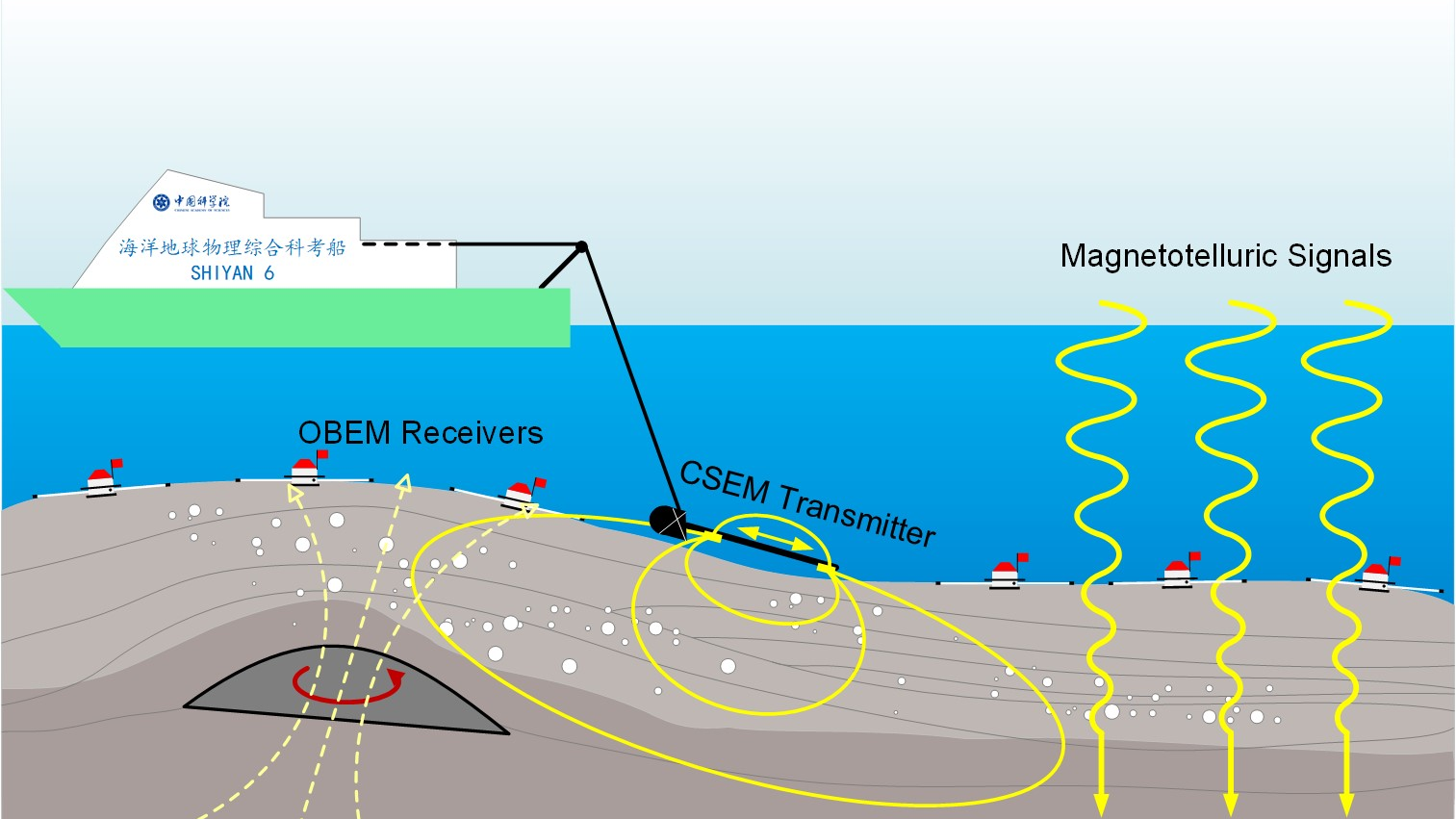
A schematic diagram of joint electromagnetic detection of controlled source and natural source. /SCSIO
A schematic diagram of joint electromagnetic detection of controlled source and natural source. /SCSIO
China has made a breakthrough in electromagnetic detection across the mid-ocean ridge, said the South China Sea Institute of Oceanology (SCSIO) under the Chinese Academy of Sciences on Tuesday.
The institute made the remarks after it conducted a deep-sea experiment with the China University of Geosciences (Beijing) at a water depth of about 4,000 meters in the central basin of the South China Sea from July to August.
The research team conducted a joint controlled-source electromagnetic and natural-source magnetotelluric detection across the South China Sea mid-oceanic ridge, with the length of the entire profile being around 100 kilometers.
By using electromagnetic transmitters and receivers, the SCSIO said they had obtained good-quality data.
According to Sun Zhen, a senior scientist at the SCSIO and manager of the project, all the electromagnetic transmitters and receivers used in the experiment are domestically developed.
The marine electromagnetic method is an important method to detect the geological structure below the seabed. Currently, only a few institutes from the United States and Europe have mature technologies and equipment for using this joint detection method, according to the institute.
The exploration detected the resistivity structure of the crust and mantle simultaneously with one geophysical profile, said the SCSIO, adding that it will enhance the country's ability to use marine electromagnetic methods in detecting seabed geological structures and resources.